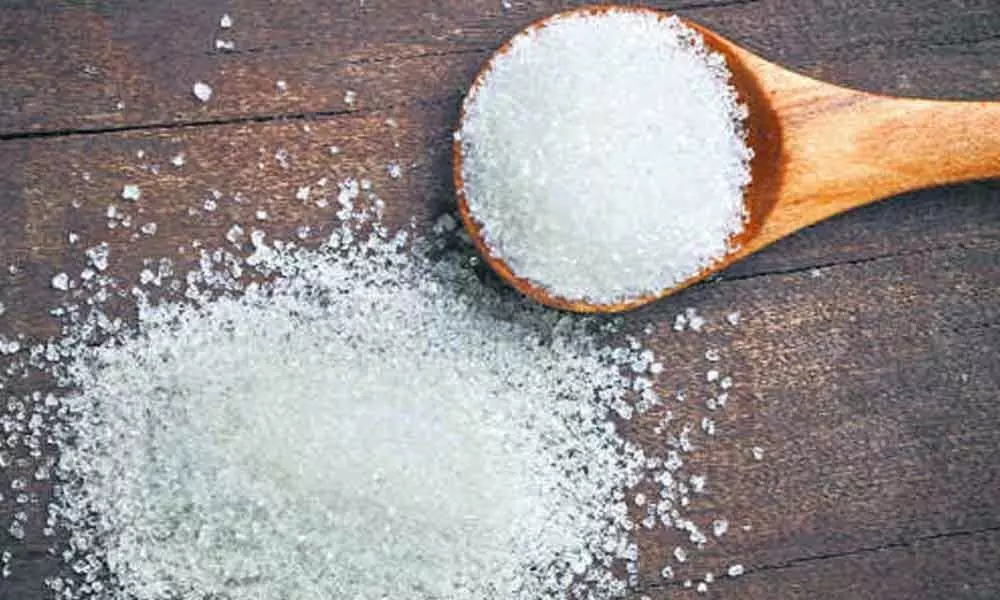Live
- Nitish Kumar inaugurates medical college in Saran
- ACI recognition reinforces CSMIA’s role as global leader in airport operations: Jeet Adani
- PM Modi inaugurates projects worth Rs. 2.08 lakh crore in AP
- Gandhi Shilp Bazar National…. Sankranthi Sambaralu Shilparamam Madhapur
- Rajashekar Yasani: Shaping the future of cloud security on a global stage
- Karnataka Government Delaying Ayushman Bharat Scheme, Endangering Elderly Lives- MP Capt. Chowta
- Aatishkumar Dhami: Revolutionizing AI and Software Engineering through Innovation
- Transforming digital landscapes: The product innovation journey of Vinay Acharya
- Vybhav Reddy Kammireddy: Pioneering the future of data analytics and AI solutions
- Angel Funding Platform Launched to Boost Vokkaliga Entrepreneurs
Just In
Scientists make low-calorie sugar using bacteria


Scientists have used bacteria to derive sugar from fruits and dairy products that have only 38 percent of the calories of traditional table sugar.
Scientists have used bacteria to derive a sugar from fruits and dairy products that has only 38 per cent of the calories of traditional table sugar.
The sugar called tagatose is approved by the US Food and Drugs Agency (FDA) as a food additive, and there have been no reports to date of the problems that many sugar substitutes have, such as a metallic taste, or links to cancer, according to the researchers at Tufts University in the US.
The researchers said tagatose may be safe for diabetics, and will not cause tooth cavities. While derived from fruits and dairy products, tagatose is not abundant and is difficult to extract from those sources, they said. The manufacturing process involves a conversion from more easily obtained galactose to tagatose and is highly inefficient, with yields that may reach only 30 per cent, the researchers explained.
In the study published in the journal Nature Communications, the researchers described a process that may unlock the commercial potential of this low-calorie, low-glycemic sugar. Assistant Professor Nikhil Nair and postdoctoral fellow Josef Bober, both from the Tufts University, came up with an innovative way to produce the sugar using bacteria as tiny bioreactors that encapsulate the enzymes and reactants.
Using this approach, they achieved yields up to 85 per cent. Although there are many steps from the lab to commercial production, yields this high could lead to large-scale manufacturing and getting tagatose on every supermarket shelf, the researchers said. The enzyme of choice to make tagatose from galactose is called L-arabinose isomerase (LAI). However, galactose is not the main target for the enzyme, so the rates and yields of the reaction with galactose are less than optimal.
In a solution, the enzyme itself is not very stable, and the reaction can only push forward until about 39 per cent of the sugar is converted to tagatose at 37 degrees Celsius, and only up to 16 per cent at 50 degrees Celsius, before the enzyme degrades. The researchers looked to overcome each of those hurdles through biomanufacturing, using Lactobacillus plantarum -- a food-safe bacterium -- to make large quantities of the LAI enzyme and keep it safe and stable within the confines of the bacterial cell wall. They found that when expressed in L. plantarum, the enzyme kept converting galactose to tagatose and pushed the yield to 47 per cent at 37 degrees Celsius. However, now that the LAI enzyme was stabilised within the cell, it could increase yield to 83 per cent at the higher temperature of 50 degrees Celsius without degrading significantly, and it was producing tagatose at a much faster rate, the researchers said. To determine if they could push the reaction even faster, Nair and Bober examined what might still be limiting it. They found evidence that the transport of the starting material, galactose, into the cell was a limiting factor. To resolve that issue, they treated the bacteria with very low concentrations of detergents -- just enough to make their cell walls leaky, according to the researchers. The galactose was able to get in and tagatose released from the cells, allowing the enzyme to convert galactose to tagatose at a faster rate, shaving a couple hours off the time needed to get to 85 per cent yield at 50 degrees Celsius, they said.

© 2024 Hyderabad Media House Limited/The Hans India. All rights reserved. Powered by hocalwire.com






